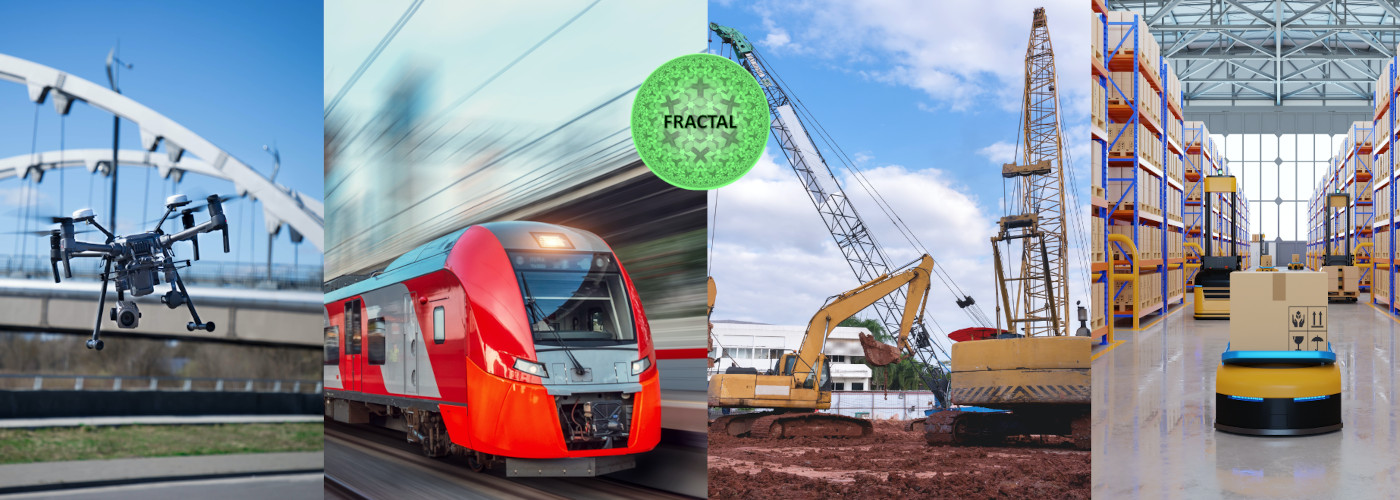“Around 10% of enterprise-generated data is created and processed outside a traditional centralized data center or cloud. By 2025, this figure might reach 75%.”
State-of-the-art
The Cloud Computing Era
A typical IoT system produces continuous streams of environmental data. In industrial and complex dynamic environments, it can be hundreds of gigabytes per second. This data must be collected, analyzed and stored, while its insights then exchanged between the devices, enabling them to respond to the surrounding changes. The traditional data analytic mechanisms are based on centralised data processing, which is on the cloud. The cloud has a lot of computing power, compared to the connected devices at the edge of the network. It can run complex algorithms on data and process it within seconds. Thus, it has proven to be an efficient approach for an IoT system to move all its computing tasks to one powerful cloud. However, while the number of connected devices continues to escalate, producing and more and more data, the network’s capacity to carry it to and from the cloud is falling behind in its growth. And while the cloud computing resources are rich, the data gets stuck in the network’s jams, often unable to get there and back on time.
Edge Computing: A New Distributed Computing Topology
To address the emerging network bandwidth limitation, the concept of edge computing was introduced. It complemented cloud-based solutions, pushing the data processing closer to the network’s edge – where things and people produce or consume that data. Edge computing allowed to distribute both the data storage needs and the processing capabilities. Even though it has been one of the latest trends in IoT, it is still a conceptual approach. Most of the present edge applications focus on data cleaning and key-event detection and do not have complex analytic mechanisms, like those on the cloud. There is a lack of implementation of the concept, due to several reasons.

The challenge
Low Adoption of Edge Based Solutions
Decentralized system is more challenging to put in place. With edge based solutions being still in their infancy, the following issues can affect the choice of the system architecture:
- Edge nodes are both consuming and producing data, handling lots of computing tasks – processing, storage, caching and load balancing, as well as applying AI and ML algorithms on massive data. Lack of reliable edge monitoring and control solutions loses to well-established and time-proved cloud
- Some of the distributed nodes rely mostly on their own experience avoiding centralized processing. There is a lack of effective big data processing algorithms to support localized and real-time decision-making, as well as global and long-term analytics
- For industrial edge computing, the devices are required to satisfy new challenging requirements, such as time-predictability, dependability, energy-efficiency and security. Together with that, there is a need for proper device management models, security in the computing and storage, and data encryption
- Edge computing overcomes typical network limitations, but edge deployment still requires a minimum level of connectivity. At present, there is a lack of autonomy, AI and failure response methods on the edge, which are critical for many applications.

FRACTAL research Project
FRACTAL Node: Empowering Edge Computing
FRACTAL project will build an open-safe-reliable-low power edge computing node. It will be designed based on the latest advancements in hardware, communication technology, storage techniques, AI, and security. The node will be cognitive and autonomous, with high performance capabilities. It will establish a new approach to reliable edge computing. The fractal configuration of its communication and storage mechanisms will enable more effective use of the network’s resources. By overcoming the lack of bandwidth and energy for data transmission, FRACTAL edge node will bring scalability to the present IoT systems.
Smart Systems at the Edge
FRACTAL project will put in place a new Smart System paradigm. Its cognitive node will bring the intelligence to the edge of the network. The integration of cognitive systems and edge systems will enable low latency and high scalability, creating a new generation of Smart Systems. Such systems will be able to respond to time-critical events, with the availability of the computation services close to the data source. They will also learn and adapt autonomously to external (environmental) and internal changes (e.g., proliferation/upgrade of other edge systems), sustaining the high performance level. In such systems, the cloud will only need to manage and control the edge nodes.
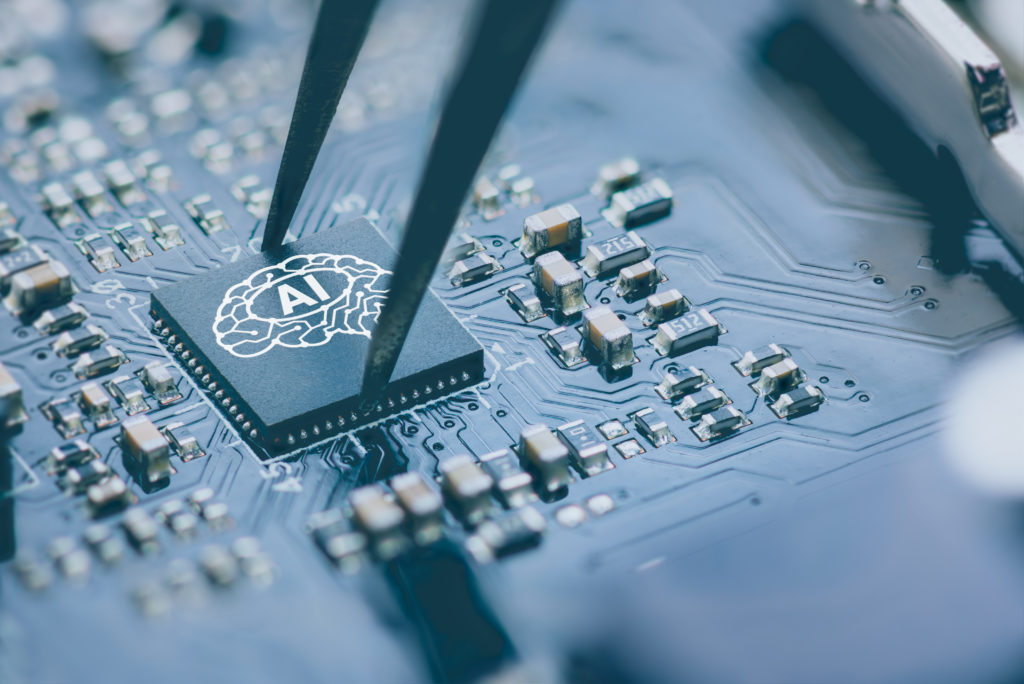
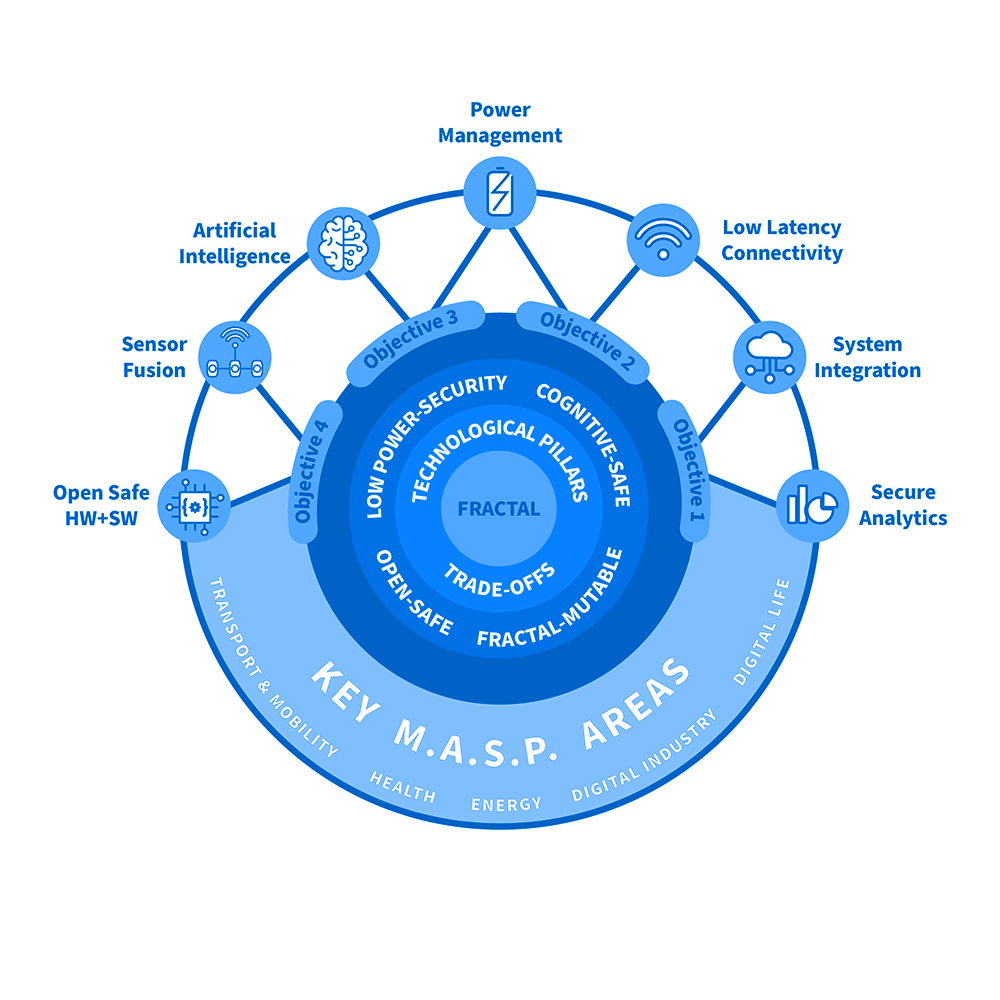
Project Ambition & Strategic Objectives
FRACTAL’s ambition extends across hardware and software, including aspects related to AI, safety, security, scalability, low power and edge integration. Therefore, the project has four main objectives held under Multi-Annual Strategic Plan (“M.A.S.P.”):
1: To design and implement an open-safe-reliable hardware platform. It will be used for building the cognitive edge nodes of variable complexity.
2: To guarantee extra-functional properties of FRACTAL nodes (dependability, security, timeliness and energy-efficiency).
3: To evaluate and validate data analytics with AI. To identify the largest set of working conditions, while preserving safe and secure operations.
4: To integrate fractal communication and remote management features into the nodes.
Main Areas of The FRACTAL’s Ambition
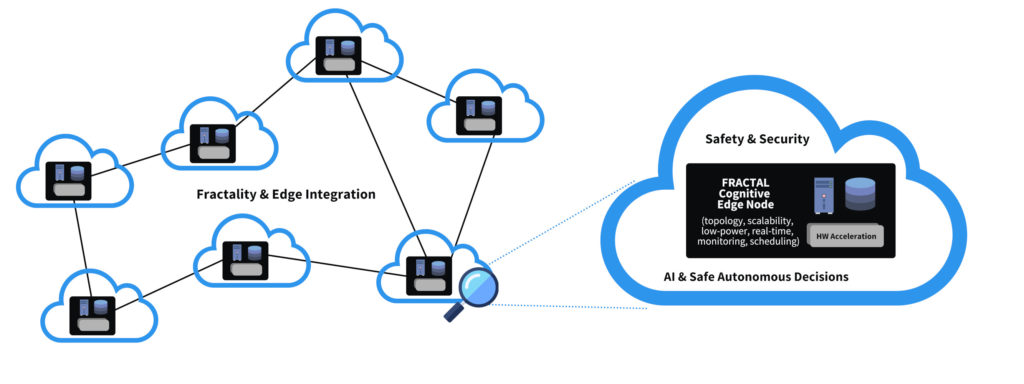
Advances Over The State-Of-The-Art
FRACTAL aims to design a powerful edge node, which will bring the analytic mechanisms traditionally deployed in the cloud closer to the devices. It will enable faster time responses and lower bandwidth requirements, by leveraging the whole compute continuum for distributed data analytics. The cloud computing requirements will be reduced, as the processing, analysis and simulation features will be on the edge. The cloud will only need to control and manage the edge operations. The research will focus on ways for data ingestion and storage, as well as algorithms and analytics models for the correct edge operation.
Bringing Reliability To The Edge
The FRACTAL edge node will be designed to handle its tasks in a safe, secure, efficient and reliable way, hence withstanding requirements such as differentiation, extensibility, isolation and reliability. In addition, sophisticated algorithms will be created to transform data at the edge into structured information, which can then be transferred to the cloud.
FRACTAL Node’s Cognitivity
Artificial Intelligence, supported by internal and external architectures, will make the node cognitive: it will be able to forecast both its internal performance and the state of the surrounding world. It will learn and improve in real-time, delivering new services for the environment’s demands. This will enable the intelligence of the whole system.
Features that will ensure node’s cognitivity:
– Internal performance metrics supervision
to evaluate the fullfilment of the desired goals (online monitoring)
– Operating environment modelling
to provide context-awareness for the Cognitive System (advanced sensing & computer vision)
– Integration of computational capacity
to process data, models, and AI algorithms (low-power multicores and hardware acceleration)
– Application of AI methods
to provide Smart Systems with learning, prediction and autonomy (artificial intelligence).

Project Consortium
The project consortium consists of 28 partners from 7 countries. Among them are leaders in edge computing and other key application areas of the project.
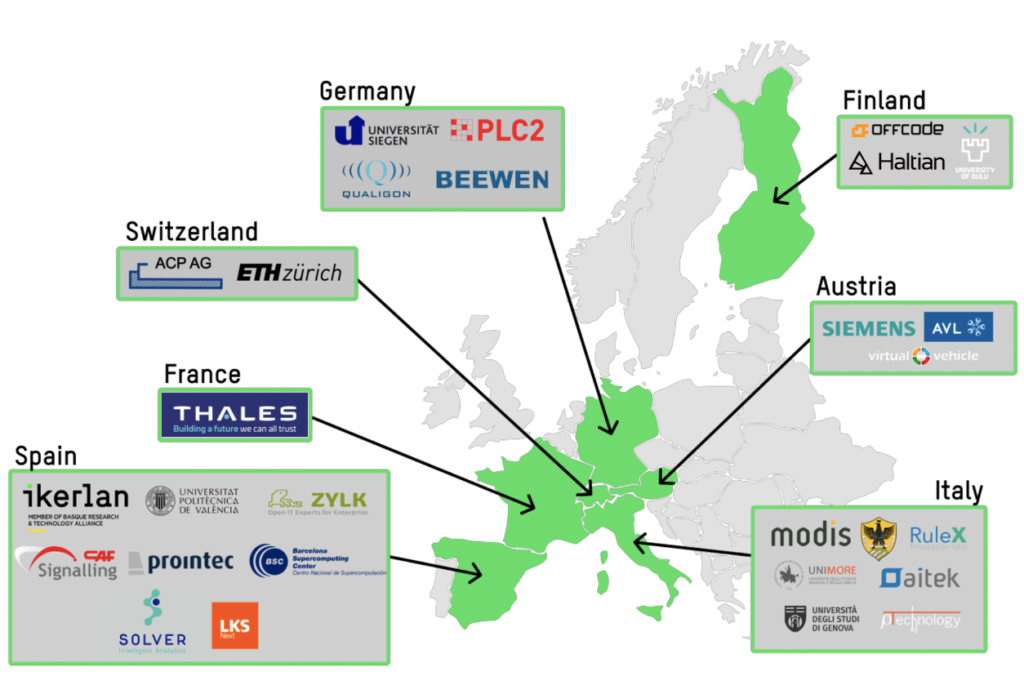
FRACTAL has received funding from the ECSEL Joint Undertaking (JU) under grant agreement No 877056. The JU receives support from the European Union’s Horizon 2020 research and innovation programme and Spain, Italy, Austria, Germany, Finland, Switzerland.

Project duration: 1/9/2020 – 1/8/2023
Learn More | Other Projects
Get in touch: research@haltian.com
